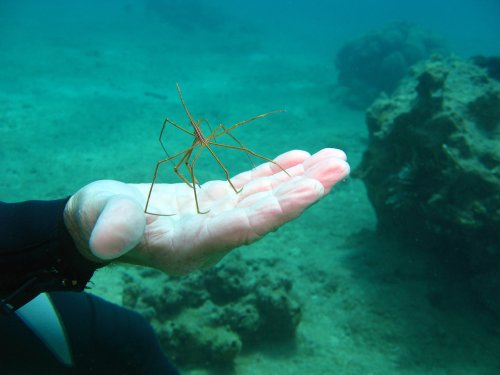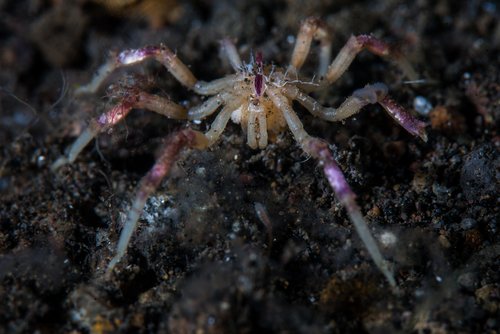Sea spiders thrive in different waters everywhere on the planet and the majority of them are so tiny that they can easily rest at the tip of your pinkie finger. In the whirling waters surrounding the Earth’s frozen poles however, these spiders are goliaths. In the event that you grabbed the biggest of these arachnids, its eight lanky legs will simply hang off the palm of your hand.
Antarctic sea spiders managed to grow large around 30 million years ago, during a time when the Southern Ocean became colder. This characteristic, called polar gigantism, is believed to be the reason why the spiders and numerous other unusually large invertebrates that live in colder regions managed to survive and even thrive.

Scientists pondered on the possible factors that permitted such creatures like the Antarctic sea spiders to grow in enormous sizes. They are likewise eager to learn what will happen as the temperatures of the waters they dwell in continue to rise since it is believed that aquatic animals that live in extremely cold waters are merely capable of tolerating a small change in temperature, making the spiders especially susceptible to global warming.
In one study issued, a group of researchers tested giant sea spiders taken from Antarctic waters, by working them to fatigue in a type of aquatic crossfit program. Studying the number of instances they could cause the spiders to turn over prior to surrendering in water with rising temperatures and declining oxygen, the scientists found out that the secret rested in their swiss-cheese-like exterior. Once the spiders increase in size, their skin becomes holier, giving them the ability to power their bigger bodies by taking in the copious oxygen clustered in cold waters. Apparently, this aids them in obtaining the oxygen they need in times of warm workout periods as well, signifying that they may be able to discover a means to live on as their environment continues to warm.
“We thought the giant spiders are going to be the first to disappear from the Antarctic Ocean,” shared Caitlin Shishido, a doctorate student at the University of Hawaii at Mānoa who led the study. But “they may actually be O.K. as these oceans warm,” she added: “It’s like Jurassic Park: ‘Life finds a way.’”
Sea spiders are a strange bunch. They do not possess any lungs, gills or any kind of organ to breathe. The spiders manage to secure the necessary oxygen by simply doing nothing, simply permitting the air to stream towards the pores of their shell-like skin, known as the cuticle.
The amount of available oxygen and the rate of use controls the size of the majority of these creatures. However, in freezing waters, where oxygen is clustered more densely and sea animals usually have lower levels of metabolism, such an abundance gives them the ability to reach bigger sizes – with legs that can extend more than a couple of feet.

Ms. Shishido and her associates assumed that sea spiders would not survive in warm habitats and also smaller waters since their demand for oxygen would exhaust their entire source. Based on the experiments, however, larger sea spiders exhibited similar performances to their smaller peers of the same kind. Accustomed to thriving at fresh waters that have temperature levels below the freezing point, amazingly, there were massive sea spiders who succeeded in flipping at nearly 50 degrees Fahrenheit or 10 degrees Celsius. Their special cuticles allowed them to do so: “These guys have found a way around this oxygen limitation by basically making themselves holier or more Swiss cheesy,” Ms. Shishido said.
In the years to come, Ms. Shishido expects to discover exactly the optimal holey level prior to becoming structurally flawed – and in the event that holes exist or are even more plentiful, in more lively species that require additional oxygen. In addition to that, she is interested in knowing if they are capable of adapting to steady rises in temperature or respond to prolonged periods of warming in a more extensive study.
“Nobody really works on them, and they’re just really weird creatures,” she said. “You don’t want them to disappear yet because we just don’t know much about them, and they could be really important.”






